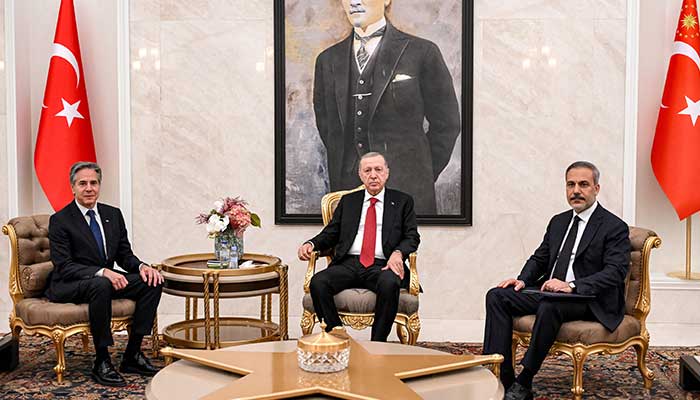Travel
EXHIBITION: SLEEPING TIGER
字号+ Author:Smart News Source:Sports 2025-01-15 08:27:39 I want to comment(0)
Tipu Sultan — generally lauded as a hero for resisting British occupation and fighting bravely to maintain his autonomy — is a relevant figure in the Subcontinent but also one the likes of which the Muslim world could benefit from having in their midst now, as we see the hegemony of the West grow, oppress and occupy. Hence, the idea of re-presenting Tipu Sultan in Adeela Suleman’s new exhibition, titled ‘Exit The Tiger: Symbols of Valour in Tipu’s India’, is a credible one. What propelled the artist to resurrect the renowned figure in her latest oeuvre? Besides this question, the exhibition raises a few more queries. The exhibition presented at London’s Grosvenor Gallery, in association with Karachi’s Canvas Gallery, includes six pieces painted on found vintage ceramic platters and three allegorical battle banners. The works are inspired by historical events, including the role of the East India Company, Tipu Sultan’s prowess and the practices of the Mughal empire. The paintings are recreations of already existing historical works that depict events of import with similar titles. These historical pieces were often commissioned by the emperors or appointed rulers of the time to propagate tales of their accomplishments. However, in the case of Suleman’s work, Adeela Suleman’s exhibition in London plays with historical narratives but lacks any urgency or sense of current relevance they present an alternate history, slightly tweaked to create a fabricated reality for future historians. For instance, the two painted plates titled On the Plains of Pollipur and Haider Ali and Tipu Witness the Qamargah Hunt, respectively address events suggested in the title of the works. Paintings of similar titles depicting these events already exist as miniature paintings. However, these two pieces are distinct in their representation compared to the original works. As is the norm in miniature painting, these works borrow figures and motifs from the original but compose them in a manner so that it cannot be referred to as a replica. In the latter painting, the addition of Tipu Sultan and his father, Haider Ali, in the piece adds originality to the borrowed visuals, portraying a fictitious story. On the other hand, the piece titled Tipu’s Body is Discovered by Sir David Baird in the Ruins of Seringapatam in 1799 is a near copy of the original; a company painting by David Wilkie. Besides the bright hues, a dictate of the medium used, Suleman’s contemporary piece appends a motionless tiger in the forefront of the piece, setting it apart from the older painting. Skillfully painted by trusted artisans Younas and Asghar — who are part of the artist’s karkhana [workshop] and heed Suleman’s detailed and careful instruction on composition and colour — the paintings are unique in that they are painted in enamel and lacquer, a medium that is part of the truck art vernacular. However the nagging question that begs answering is, how and why does reiterating historical events of value address the current volatile situation of Karachi? Especially if no element of said current socio-political events is present in the works, not even symbolically. Why not devise new pictorials to address contemporary problems, instead of echoing popular images? The one aspect of the work that could potentially be telling of the environment that it is made in is the elaborately ornate frames encompassing the plates; woodwork synonymous with craft production in Pakistan, done by a karigar [artisan] quite possibly most affected by the volatility of the city. Albeit, visually fused with the paintings, these carved wooden frames are not treated as part of the work, as they are absent in the caption description. Suleman’s work is a response to the violence against dissent that she has witnessed in her home city, Karachi. To quote the catalogue essay by Hameed Haroon, “In a move to examine the distant origins of the violence in her hometown, Adeela avidly mined the early history of violence in Islamic history.” Haroon goes on to explain, “The themes of state violence, colonial repression and a resistance to injustice are mirrored in Suleman’s work, which demonstrate a deep respect for human and civil rights.” Hence, the artist looks to history for answers to our current civil and governmental dilemmas. Bearing in mind our rapidly eroding memory of history and culture in an extremely fast-paced age of information, I appreciate using Tipu Sultan as a gesture to reinvigorate history, but without referencing a current scenario to inform these works — as Suleman has previously done, in her now infamous Killing Fields of Karachi — this effort stalls short in bringing into focus current concerns. Instead, what we have is attractive, skilfully rendered paintings and sculptural pieces that highlight Suleman’s efforts in craft development.
1.This site adheres to industry standards, and any reposted articles will clearly indicate the author and source;
 Related Articles
Related Articles-
Bashar al-Assad flees Syria as luxury cars previously used by him go viral
2025-01-15 07:37
-
Ed Sheeran joins Daniel Craig at JK Rowling's glitzy hogmanay bash
2025-01-15 07:23
-
Ed Sheeran joins Daniel Craig at JK Rowling's glitzy hogmanay bash
2025-01-15 07:16
-
Katy Perry, Orlando Bloom ring in 2025 with new fitness goals
2025-01-15 06:54
 User Reviews
User Reviews Recommended Reads
Recommended Reads Hot Information
Hot Information- Security guard rapes woman in Rawalpindi hospital
- DWTS winner Jenna Johnson bids farewell to 2024 with heartfelt note
- Timothee Chalamet’s sister Pauline reflects on giving birth in 2024
- ‘Wicked’ deleted scene causes uproar among fans: ‘Omg we were robbed’
- BJP-linked Dwijajit Saikia appointed head of Indian Cricket Board
- Why Angelina Jolie skipped only brother James Haven’s wedding?
- Zara McDermott sparks 'cheating rumours' after split from Sam Thompson
- Isla Fisher embraces gratitude as she moves forward after divorce
- Sindh announces winter vacation for schools
 Abont US
Abont US
Follow our WhatasApp account to stay updated with the latest exciting content













